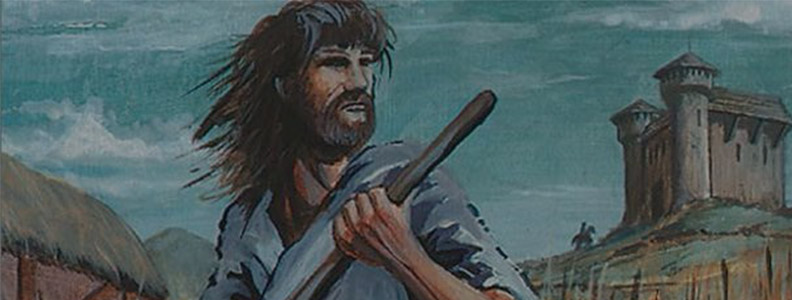Jeff Menges Interview
Welcome to our MTG Artists Interview series There’s no Magic without art.
Today we have the pleasure of sharing with you our interview with Jeff Menges, one of the original Magic artists.
Hi Jeff. As one of the original 25 Magic artists, how did it all start?
For me, it started by working with a small RPG company that was innovative and willing to take a chance on a new idea. In 1991 WOTC was just a handful of employees putting out Role-playing products that I was providing black-and-white artwork for.
Mostly grayscale stuff. When this idea for a card game began to develop, the first artists they asked were those that were already working with them on these products. Brian Snoddy, Chris Rush, Daniel Gelon, and I but there were probably the others who started this way.

At what point in time did you first notice the game was a huge hit?
It was obvious from the start that the game was something different. I was at GenCon in 1993, when the game came in, they couldn’t sell it fast enough. They sold everything they had at that show.
This year marks Magic’s 25th anniversary. What do you consider to be the secret behind such longevity?
What is different about it is the ever-changing landscape of the game. Every few months there is an entirely new set of art, options, and combinations to get a hold of. It keeps players buying and collectors interested.
WOTC has done a great job maintaining story and gameplay quality. It’s a game that is built to grow’ not to be complete at any point. That seems like something many games have now, but it was different in 1992.

Can you give us a brief description of your painting process, and how has it changed since the early days of Magic?
Once I manage a sketch in my scrawls kind of scribbles” something that I can see the answer to an idea in, there are a few steps (usually with tracing paper) to clarify and develop those ideas.
These are usually about standard page size, for convenience’s sake. when that sketch has what I want, it gets enlarged digitally, and then hand-transferred to a board where the painting takes place. While I do occasionally digital color work, I prefer to work traditionally.My paint of choice is usually acrylic. I have occasionally painted cards in watercolor and on really rare occasions in oil (though never used oil for MTG). I’ve recently started to experiment with gouache, which seems to be a painting medium that suits my skill set very well.
In 26 years, the biggest change in process has to do with digital access. The internet has become such a powerful tool for research, you can get a picture of ANYTHING in fractions of a second.
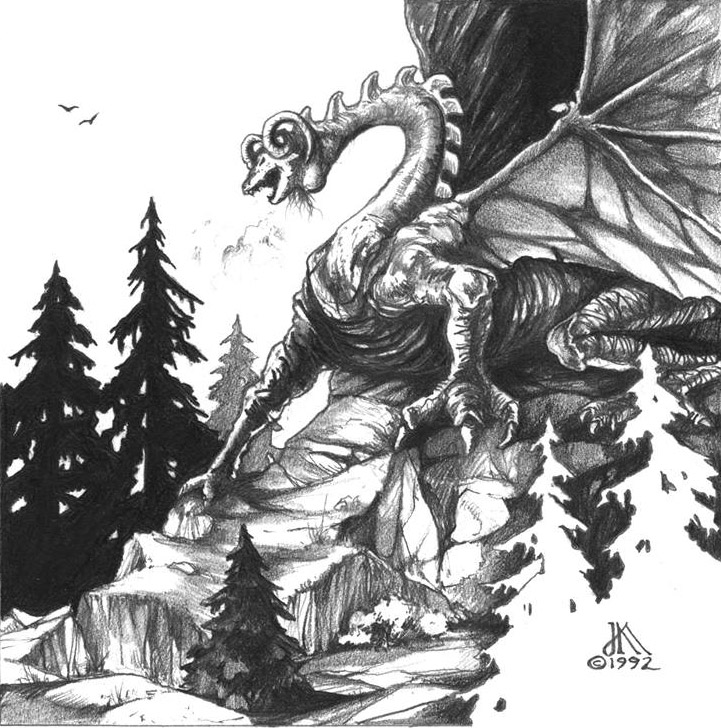
It wasn’t like that in 1992. (Or, maybe it was for a select few) I think it has killed a lot of imagination. I think the best thing an artist can do today, is to develop an idea without the computer and go to it later when your vision is already clear. Only then will the image be yours.
You’ve described yourself as a “landscape artist working in a fantasy setting”. How has your work on Magic impacted your personal work?
I have. Magic has affected it, on many levels.
Being the biggest potential client in the marketplace has influenced my potential directions and the buyers who are interested in my work. For example, a recent piece that has the look and feel of my Alliances era paintings will get much more attention from my fan base than a linocut I am working on for my own creative satisfaction.
As long as I require money to survive, that kind of skew will impact the choices I make on work I want to sell for income. It becomes a balancing act, between pleasing an audience and self-satisfaction. Both are needed for art to thrive.
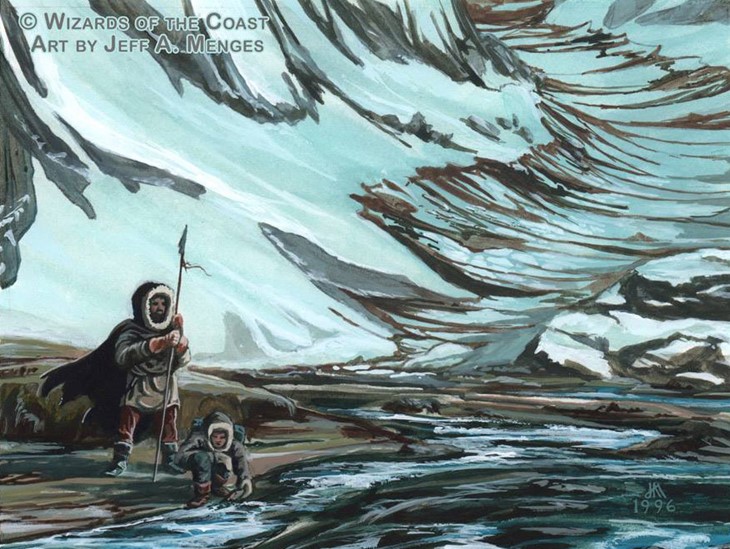
Do you recall what were the most challenging cards to paint?
As the game developed, art requirements changed. Originally, experimentation was encouraged. Later, it was about competing for jobs with artists who you looked up to for inspiration just a few years prior.
The game’s success meant nearly every illustrator in the fantasy market was drawn to it like moths to a candle. So what I was doing in 1996 was very different from what I did for Alpha.
Cards that had challenges ‘conceptually’ Swords to Plowshares is one I get asked about a lot. When I was given the title (over the phone) I asked what that was supposed to be about’ Jesper Myrfors told me it was about turning a fighter into a peaceful, non-threatening creature.
So I imagined an old warrior who was now working the fields with his military past (the castle-fortress) behind him.
Aliban’s Tower(s) from Homelands was tricky, too. While I was keen to do towers, it was explained that they were made by summoning the stones from the surrounding area, so they had to look kind or organic, not cut.

Of the art you made for Magic, can you name some favorites?
You’ve published ‘The Gathering’, an art book with works of the original artists involved with Magic: The Gathering. The book was a success on Kickstarter, and it’s now available for sale online. What can you tell us about this project?
That is a whole, long story in itself.
I have a long history with books on a few levels. I’m obsessed with old ones, I’ve worked in publishing for over 30 years, and I’ve put together more than a few myself.
Full Steam Press is a project that was just an idea when the 20th Anniversary of Magic came around, and the opportunity to do something with it seemed too good to pass up. It was going to be good for the fans, good for the artists, and perhaps even good as a historic record concerning the game. It took a toll on me though, creatively and physically. Learned a lot.
[Click here to learn more about The Gathering: Reuniting Pioneering Artists of Magic: The Gathering]
I saw on your Facebook page you attend many game-related events. What feedback do you get from the players?
The feedback I get is often’ “I love the old cards when the images were painted, and styles were diverse” But I’m sure that’s not the same feedback that a new artist who is working digitally gets across the aisle.
People are attached to their memories of when they were learning the game. Those early impressions are strong. So depending on when you started has a great impact on which art you like.
The people that come to my table either love the old stuff and linger to remember those early days, or realize I worked on almost nothing they recognize, and move on.
The most commonly asked question is “Why don’t you work on Magic anymore?”┬á I’d love to. It has become an integral part of my creative fiber. I don’t make that decision though. If the call came, I’d answer.
But I am thrilled that I am still welcomed and sought-after as part of the creative team that has worked on Magic over the years.
Is there any Magic-related story/episode you’d like to share with us?
Hmm. It’s been a long, winding road, but an incredible and enjoyable journey. Recently it has come to my attention that some of the brilliant artists working on the game today found Magic or were exposed to it when they were children, say 20ish years ago.
They are now in their early 30s, and they have memories of my art the way I recall paperback book covers and record sleeves that influenced my creative choices. That is an influence I never imagined my work might have. It is both humbling, and amazing. I hope I can continue to add to it for some time.
We want to thank Jeff for taking the time to talk to us, and for sharing his vision. Remember to follow Jeff on Facebook
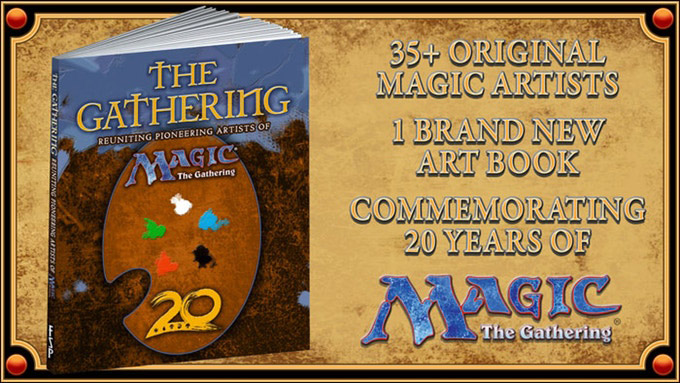
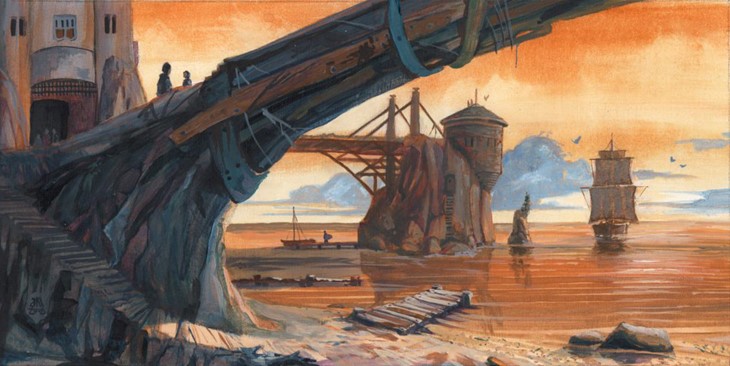

Recommended Posts

Adam Paquette Interview
Welcome to our MTG Artists Interview series There's no Magic without art. For this week's interview, we talked with Ad
Read More
Anson Maddocks Interview
Welcome to our MTG Artists Interview series There's no Magic without art. We're very happy to share with you our talk
Read More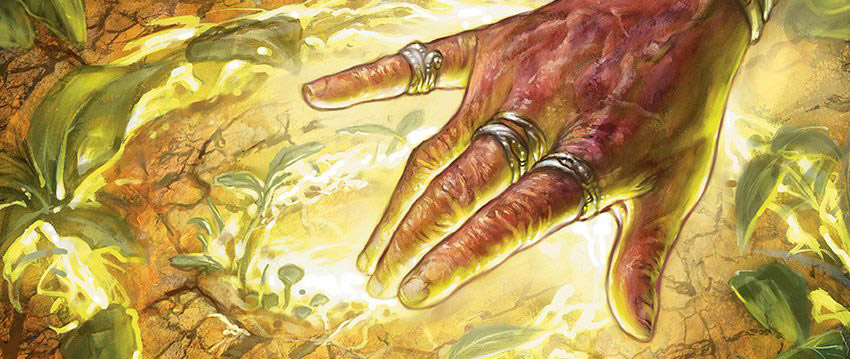
Anthony Palumbo Interview
Welcome to our Artists Interview series - There's no Magic without art - where we talk to artists about their work on
Read More